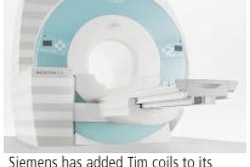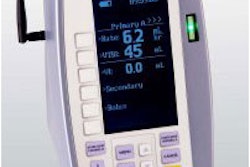The use of breast MRI computer-aided detection (CAD) software can offer improvements in specificity, according to researchers from the University of Washington Medical Center in Seattle.
"The presence of (CAD)-significant enhancement is sensitive for malignancy and its absence in benign lesions improved specificity," said Dr. Wendy DeMartini. She presented the team's research at the 2005 RSNA meeting in Chicago.
Breast MRI studies, while highly sensitive, produce variable specificity and are time-consuming studies to process and review. To compare the accuracy of breast MRI exams both with and without CAD software in discriminating benign from malignant lesions, the researchers studied 154 consecutive suspicious breast lesions detectable only on breast MRI.
The lesions (41 malignant, 113 benign), which were subsequently biopsied under MRI guidance, were evaluated with and without CAD software (CADstream, Confirma, Kirkland, WA). The researchers recorded the computer-generated analyses of enhancement for each lesion, including the presence or absence of "significant enhancement" at 50% and 100% minimum enhancement thresholds. Significant enhancement was defined as an increase in initial postcontrast signal intensity greater than or equal to the specified minimum threshold.
They also noted peak enhancement signal intensity on the first postcontrast sequence, as well as the classification of enhancement patterns into percent volumes of washout, plateau, and persistent enhancement. The team then performed Fisher's exact tests to compare the likelihood of malignancy based on the presence of significant enhancement at each enhancement threshold, as well as Student's t-tests to compare enhancement patters and peak enhancements of malignant and benign lesions.
The presence of significant enhancement was highly sensitive for predicting malignancy, with 38 of 41 (93%) malignant lesions showing CAD-detected enhancement at both the 50% and 100% thresholds, DeMartini said.
The absence of significant enhancement on the software produced specificity improvements; false-positive rates were reduced by 8.8% at a 50% enhancement threshold and 23% at a 100% enhancement threshold. The 23% reduction was a statistically significant finding, she said.
The researchers found no significant differences between enhancement patterns of benign and malignant lesions. All lesions demonstrated a wide range of signal intensity peaks and a wide range of washout, plateau, and persistent patterns of enhancement, she said.
DeMartini acknowledged some limitations in the study, including reliance on a single site with three specific MRI acquisition protocols.
"The use of (CAD) may reduce the number of MRI biopsies for false-positive lesions," she said. "And (CAD) can supplement but should not replace the radiologist assessment, as false negatives can occur."
By Erik L. Ridley
AuntMinnie.com staff writer
December 12, 2005
Related Reading
CAD falls short of double reading for breast cancer detection, October 25, 2005
Sharp rise in U.K. breast cancer survival rates, October 10, 2005
Breast cancer drug move gives hope to U.K. patients, October 6, 2005
Jury is still out on U.K. CAD utilization, October 5, 2005
Computer-aided detection system helps diagnose breast cancer, September 6, 2005
Copyright © 2005 AuntMinnie.com



















